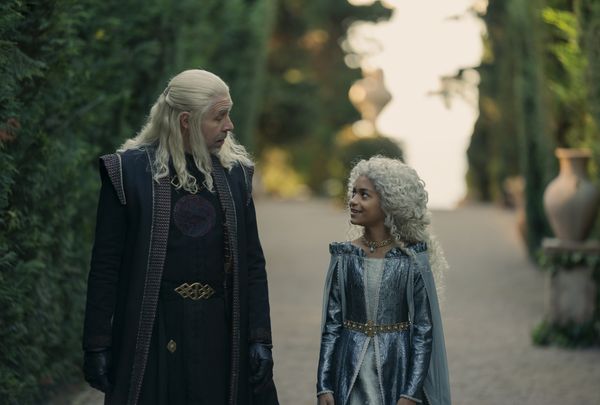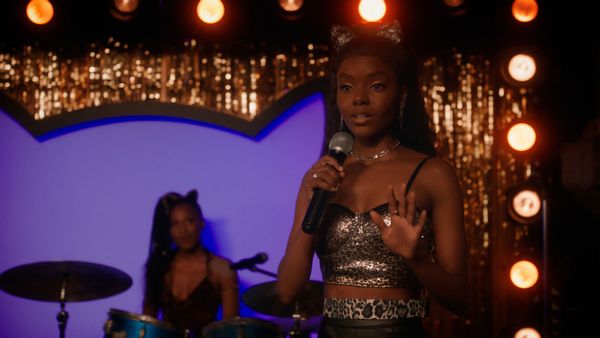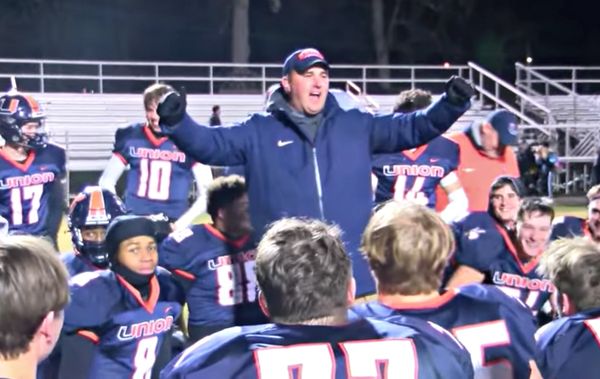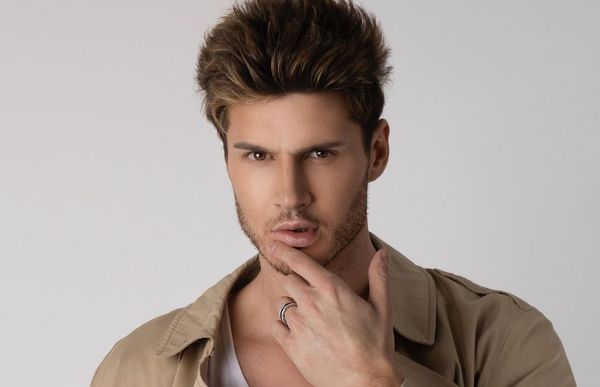
You may have heard of the Black Best Friend trope before. Think Stacey Dash's Dionne in "Clueless," or Angela in "Boy Meets World." These characters existed to be the glorified foil and sidekick to their white best friend. They happily nodded along or acted as an all-knowing conscience for their misguided white friend. But television and film are more progressive than that now. So let me introduce you to what the internet has coined as the newest variant — the Disposable Black Girlfriend.
The way Brandy Monk-Payton, an assistant professor at Fordham University who specializes in race and representation in film and television describes the Disposable Black Girlfriend trope is similar to the former Black Best Friend trope. She told Salon that this character is typically brought into a film or television show to allow the main character to grow and change but then is discarded after they have served a purpose.
"While being summarily dismissed after that, primary characteristic growth has been seen. And so this is why it's a term is called disposable, right?" she said. "It's someone who is wielded or utilized to serve a particular kind of function for the narrative for a main character, who is generally white, but I don't think has to be white. And then recedes into the background."
For example, in the second season of Netflix's stand-out hit "Sex Education," the show's main character and teen sex therapist Otis (Asa Butterfield) begins a relationship with his crush Ola (Patricia Allison). And for more context, Ola is half Black. The two don't last very long because of Otis' lingering feelings for the girl he carries a torch for, Maeve (Emma Mackey), a white girl. Ola breaks up with Otis when she realizes he is still in love with Maeve and in turn realizes she doesn't love him. She later receives significantly less screen time but she realizes she is pansexual and dates another of the other characters in the show. But in the show's fourth and final season, Ola who served a larger part of the main character's storyline in the earlier seasons disappears entirely with only a brief explanation from Otis that Ola and her father moved away.
People online found that Ola was not the only Disposable Black Girlfriend victim — there are countless others from your favorite television shows: old and new. They all suffer the same fate as Ola or in some cases much worse fates. Characters like Laena (Nova Foueillis-Mosé, Nanna Blondell) from "House of the Dragon," Nicole (Summer Madison) from "The Summer I Turned Pretty," Josie (Ashleigh Murray) from "Riverdale," Zoe (Melanie Liburd) from "This Is Us," Stephanie (Jerrika Hinton) from "Grey's Anatomy," and the most egregiously mistreated Abbie (Nicole Beharie) from "Sleepy Hollow."
The difference between the Black Best Friend and Disposable Black Girlfriend is that currently, many Black female characters are written as love interests for lead male characters. They also do not necessarily have to be with white male protagonists but they are typically in popular, mainstream white-led shows. And for the most part, they are usually ditched in favor of white women.

But this new iteration of the trope "creates Black women as sort of objects and subjects of desire, which I think is something that the industry has wanted to champion right, and diversity and inclusion, wanting to move away from that Black Best Friend's category or that Mammy." While these characters are written as the romantic paramours of a main character it's always temporary. They are never given much interiority and they can be easily discarded without any warning. "She becomes a plot device," Monk-Payton said.
Two of the biggest casualties of this trope are Stephanie from "Grey's Anatomy" and Abbie from "Sleepy Hollow." The long-running medical drama is all about love triangles and the intrapersonal relationships between doctors at Grey-Sloan Memorial Hospital. One of the more polarizing love triangles was the one between resident doctors Stephanie, a Black woman, Jackson (Jesse Williams), a half-Black man, and April (Sarah Drew), a white woman. Jackson and April's complicated history started before Jackson began dating Stephanie. The former hookup couple had a very on-and-off relationship with it resulting in Jackson beginning to date someone else, Stephanie. Also, April was engaged to a random man named Matthew (Justin Bruening). In one of "Grey's" most popular scenes, on her wedding day, April approaches the altar, and the officiant gives people time to object. Of course, Jackson now realizes with Stephanie sitting next to him as his wedding date, that April is the one for him. He admits his love in front of everyone, shocking April, her fiancée, and his own girlfriend. Jackson and April end up running away together in the midst of her wedding, leaving their partners in utter disappointment and pure horror.
"There is something to say about colorism that emerges right within this sort of landscape. This ideal of whiteness even pops up when sort of men of color are utilizing disposable Black girlfriends," Monk-Payton said. "What factors are apparent in how these women are understood in a broader kind of cultural imaginary that says darker-skinned Black women are disposable, right?"

Stephanie was always a supporting cast member in "Grey's Anatomy" so her slow fade into the background post-Jackson and April's betrayal didn't sting nearly as hard as the killing off of the Black female main character Abbie (Nicole Beharie) from "Sleepy Hollow," which premiered in 2013 on Fox. In the supernatural series, Abbie is the hardened cop who can see ghosts and has a connection to the paranormal, which leads us to the co-lead of the show, a white man from the 1700s, Ichabod Crane (Tom Mison). Basically, it's a buddy cop supernatural show. Viewers grew attached to the budding romantic relationship between partners and supernatural crime-fighting-duo Abbie and Ichabod. If it was any other procedural drama, Abbie and Ichabod would have been together by the third season but the show sidelines Abbie in the second season to focus on Ichabod's long-lost wife and son. In the third season, Abbie's character is killed off in a shocking event that stunned fans. Ending with a lackluster fourth season and without Beharie's star power, the show suffered. Since the show's end in 2017, more reporting has uncovered a series of allegations of a racist and hostile work environment, isolating Beharie, who was allegedly labeled "difficult" by a predominantly all-white male staff under showrunner Clifton Campbell.
While Abbie and Ichabod were never together, nonetheless, I feel the way Abbie as the main character, and Beharie the lead actress were treated is indicative of the same harmful and discardable pattern that the Disposable Black Girlfriend trope reinforces. In the case of Abbie, Monk-Payton points to the egregious lack of representation behind the scenes for one of many reasons both Beharie and Abbie were so horrendously mistreated.
"There's a kind of anxiety around [positive representation] because they don't have people in the writers' room that could speak to a certain kind of experience," she said. "Anything they do is always surface level which is a violence in and of itself, to not have that kind of complexity in this realm of representation."

So the next time you watch your favorite popular show, pay attention if you can spot what is hidden from the common eye — the covert and longstanding mistreatment of Black female characters. They deserve to have voices that aren't only heard but also considered, along with agency and permanence just like their white counterparts.







